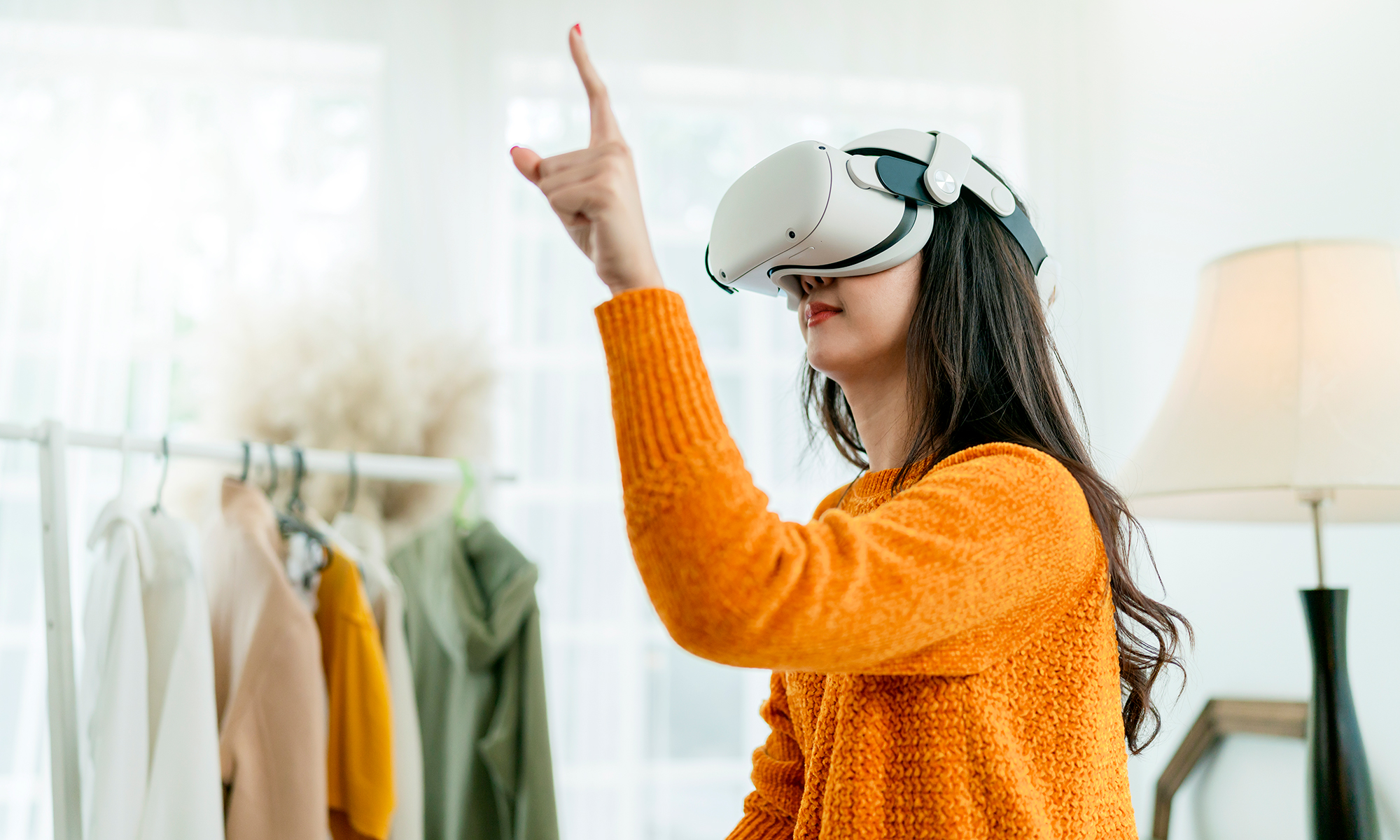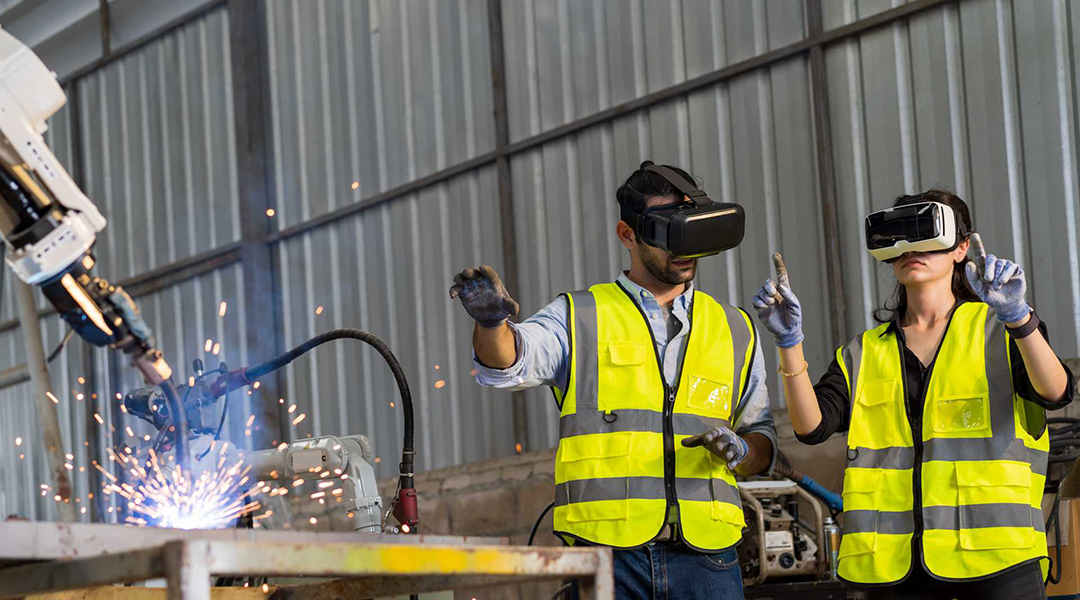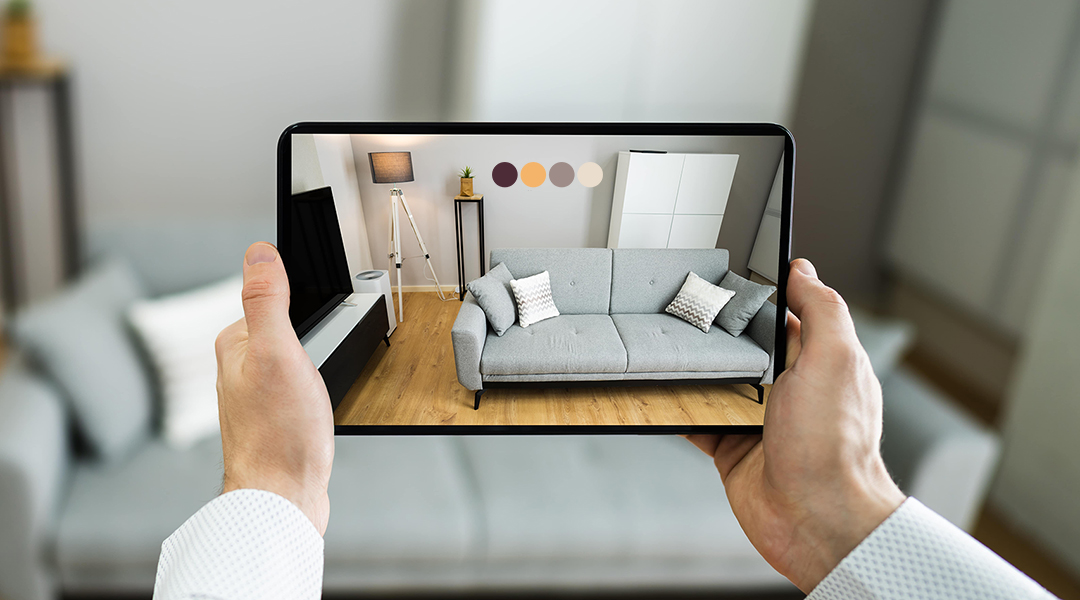When traditional methods falter, businesses innovate and adapt. Change is constant, and those unwilling to embrace it risk falling behind. When the COVID-19 pandemic struck, the virtual showroom became a popular alternative to physical visits. Unable to welcome customers in person, businesses turned to 360 virtual showrooms to maintain engagement.
A virtual showroom is accessible as a desktop application, compatible with Windows and MacOS, or integrated directly into your website. This platform allows you to showcase, present, and sell digital renditions of your products. In today's digital age, establishing a digital representation of your products is more essential than ever, ensuring a premium customer experience online. Through this application, potential clients can immerse themselves in a virtual showroom, allowing you to captivate them with meticulously curated content enriched with infographics, animations, and direct links to your e-commerce platform.
One notable advantage of a virtual showroom and virtual reality mobile app development over its physical counterpart is the ability to extend invitations to clients worldwide, facilitating global engagement and offering scalability to your business. Let's delve deeper into the advantages of leveraging a virtual showroom for online product sales. In our guide, discover why the virtual showroom represents today and the future of shopping, its universal benefits for businesses, and how your business can harness its potential today.
What Is a Virtual Showroom?
Digital showrooms, also known as virtual showrooms, represent an innovative solution enabling brands and retail buyers to interact and transact through an online platform. These platforms replace traditional physical showrooms and trade events, negating the necessity for physical locations and tangible product samples to showcase new collections. Virtual showroom software acts as a bridge between the digital and physical realms.
Brands curate and present new collections within these digital spaces, showcasing product photos, detailed specifications, pricing, and delivery information. Some digital showroom platforms even offer 3D virtual sampling capabilities, eliminating the need for physical samples. Retail buyers can explore these showrooms at their convenience, digitally perusing new products or collections before seamlessly placing purchase orders directly within the same platform.
A virtual showroom enables prospective customers to access an immersive shopping experience beyond reality. As a result, the retail industry is increasingly embracing the best virtual showrooms as the future of shopping. A diverse array of marketers have already implemented virtual showrooms for their brands, covering various sectors such as:
- automobiles;
- electronics;
- departmental goods;
- cosmetics;
- clothing;
- food and beverages;
- building and hardware;
- home furnishings;
- sports goods.
How to Use a Virtual Showroom?
The virtual showroom offers remarkable ease of use. All that's required is a modest 5-10 square meters of free space and a device equipped with a camera:
- Download the application.
- Follow the on-screen instructions upon launching the app.
- Utilize the camera to scan the designated surface and position the virtual store.
- Enter the store to browse, inspect, try on, and purchase products.
It's as straightforward as flipping a switch or pushing a button.
Upon clicking the link to access the best virtual showroom, shoppers are greeted with an extensive catalog of products. Depending on the showroom type, they can immerse themselves in an AR, VR, or interactive metaverse experience. Regardless of the chosen experience, customers can engage with products in real time within virtual environments. They can adjust size, color, and orientation and browse through product catalogs, empowering them to make informed purchasing decisions confidently.
Benefits of Using Virtual Showrooms

Virtual showrooms offer many benefits beyond traditional showroom experiences, revolutionizing how businesses interact with customers and showcase their products. Let's explore some of the critical advantages of integrating VR technology into the showroom design:
Overcoming geographical barriers
With VR technology, customers no longer need to be physically present to experience a showroom. This opens up new markets and expands the customer base significantly, as people from anywhere in the world can explore the showroom virtually.
Cost-effective product showcasing
Traditional showroom setups often require costly physical prototypes for product displays. However, VR eliminates this need by allowing businesses to virtually showcase their entire product range. Such actions not only reduce costs but also expedite the product development process.
Customization options
VR technology offers businesses unparalleled flexibility in customizing the showroom experience to meet individual customers' unique preferences and needs. From the layout and design of the virtual space to the presentation of products and interactive features, businesses can create highly personalized experiences that resonate with their target audience.
Cost-saving
Cost savings are significant when opting for a virtual showroom over a physical one. Unlike physical showrooms, which require expensive setups in prime locations with high foot traffic, virtual showrooms can be created and maintained at a fraction of the cost.
Data-driven insights
Businesses can gain valuable insights into customer behavior and preferences by analyzing interactions within the virtual reality showroom. Such data can inform product development decisions, marketing strategies, and overall business operations, helping virtual app development companies stay ahead of the competition.
Integrate with web marketplaces
For customers, this integration provides a more engaging and informative shopping experience, allowing them to explore products in a realistic virtual environment before purchasing. Overall, integrating virtual reality showrooms with web marketplaces benefits businesses and customers by enhancing visibility, engagement, and convenience in online shopping.
Expand your global reach
Many digital showroom platforms are marketplaces, facilitating connections between brands and retail buyers worldwide. By leveraging a virtual showroom platform, businesses can effortlessly share their collections with buyers worldwide, eliminating the need for costly physical showrooms in various regions. Such an approach is particularly advantageous for companies seeking to penetrate new markets and increase international sales.
Integrating a SWOT (Strengths, Weaknesses, Opportunities, Threats) analysis
By conducting a SWOT analysis specifically created for VR showrooms, companies can gain valuable insights into the strengths and weaknesses of their virtual showroom strategy and identify opportunities for growth and potential threats to success. This proactive approach allows businesses to leverage VR technology effectively and capitalize on its strengths, such as immersive customer experiences and cost-effectiveness, while mitigating weaknesses and addressing potential threats.
As VR technology continues to advance and become more accessible, it is clear that it will play an essential role in shaping the future of showroom design and customer engagement. Embracing VR technology allows businesses to stay ahead of the curve and provide immersive, interactive experiences that drive customer satisfaction and loyalty.
Overcoming the Challenges of Virtual Reality Showrooms
While a virtual reality showroom holds significant promise, it has its fair share of challenges. Let's explore some common challenges and their corresponding solutions:
Technical Challenges and Remedies
The evolving nature of VR technology often leads to technical hurdles during design and implementation. Issues such as motion sickness, lag, or compatibility glitches may arise. Collaborating with VR experts and staying abreast of the latest technological advancements can mitigate these challenges.
Ensuring User-Friendly Design
Crafting a user-friendly VR showroom is essential for delivering a positive customer experience. The user interface must be intuitive and easy to navigate, facilitating seamless product interaction. User tests throughout the design phase can help identify and address usability concerns.
Balancing Realism and Functionality
Achieving the ideal balance between realism and functionality poses a significant challenge in virtual reality showrooms. While creating a visually stunning and lifelike virtual environment is crucial, it should not compromise the showroom's overall functionality. Striking the perfect equilibrium between these elements ensures a captivating and seamless experience for customers.
What Can Customers Do In Virtual Showrooms?
Virtual showrooms are exclusively designed and developed with customers in mind, offering a host of functionalities beyond expectation. Customers can seamlessly explore 3D replica models of products, access multimedia information with a single click, and engage in live interactions with the sales team to address any queries they may have. Customers have a myriad of options available to them within the virtual showroom:
- they can navigate the virtual space seamlessly, integrating it with the real world for a fully immersive experience;
- customers can virtually "try on" products or see how they fit in their real-life surroundings, particularly with accessories;
- utilizing a virtual ruler, they can accurately gauge the size of each product and determine if it suits their space;
- detailed product descriptions and characteristics are readily accessible for informed decision-making;
- customers can peruse marketing materials and advertising information to learn more about products and promotions;
- the virtual showroom facilitates sales, promotions, and seasonal activations, providing an engaging shopping experience;
- most importantly, customers can make purchases directly within the virtual environment.
By offering such versatility, the best virtual showroom empowers customers, instilling a sense of control in the purchasing process and alleviating any potential stress associated with buyer's remorse. It assures customers that they're not simply buying into thin air but tangible, real products, providing them with the genuine "Try Before You Buy" sensation.
Choosing the Right Type of Virtual Reality Showrooms
In the contemporary landscape, various digital technologies and software are employed to create online virtual showrooms. The prevalent immersive technologies include augmented reality, virtual reality, and WebAR, offering users immersive 360° and 3D imagery views from virtually any perspective. The chosen technology dictates whether the virtual showroom allows users to examine objects in 3D or involves them in a walkthrough experience.
AR Virtual Showroom
AR is the most prevalent technological preference for contemporary virtual showrooms, offering the ability to digitally augment reality without requiring specialized equipment. Through AR, product information and objects are superimposed onto the real world, making it an ideal choice for physical stores seeking to enable visitors to visualize products within their own spaces, as exemplified by the renowned IKEA Place app.
An exemplary instance is the AR Jaguar Showroom. The Jaguar augmented reality app brings opulent vehicles to life with remarkable realism. Clients visiting an authentic showroom can utilize their iOS or Android cameras to peer inside the car, take it for a spin, and even park it, all within the immersive AR environment.
VR Virtual Showroom
In contrast to AR, VR technology enables the creation of an online virtual reality showroom that facilitates remote shopping experiences with VR headsets or smart glasses. Offering an immersive environment with dynamic video and audio, VR allows customers to deeply engage with and explore products in an entirely new branded experience, eliminating the need for physical travel.
This technology serves many purposes, including:
- Conducting virtual house tours. Consumers immerse themselves in tours of homes they are considering purchasing.
- Creating virtual stores. Retailers replicate their physical stores within a virtual environment.
- Performing virtual product presentations. Companies develop product-specific virtual experiences.
- Creating interactive user manuals. Businesses provide real-time support to consumers as they utilize the product.
- Live video consultations. Firms replicate one-on-one customer experiences in a computer-generated environment.
- Branding promotional activities. VR enables brands to emotionally connect with shoppers, showcasing how products are made or sharing their development stories within online virtual reality showrooms.
- Customer research. Conducting buyer research in a virtual setting is simplified, allowing brands to gather customer tracking and interaction data to identify specific preferences for tailored marketing messages.
- Offering personalized recommendations. VR systems generate suggestions, such as product matches or items a customer may like, leveraging data from eye-tracking devices and VR software.
Web Virtual Showroom
The web-based digital showroom is perfect for those interested in AR technology but who prefer to avoid app development. With WebAR technology, users can experience augmented reality features without downloads — simply through their browser. However, web experiences may not suit those seeking advanced design and functionality in their showroom. Additionally, it's worth noting that not all mobile browsers are fully compatible with WebAR technology.
Which Businesses Grow With Digital Showrooms?
The digital showroom has become ubiquitous, particularly in the automotive and home decor industries. Major car brands worldwide have embraced virtual reality trends on their websites, engaging and converting visitors into customers.
However, the potential of virtual reality showrooms extends beyond big brands. Various other businesses can leverage virtual reality showrooms to enhance their online presence and drive sales:
Stores with consumer goods
Virtual reality showrooms can significantly benefit businesses selling consumer goods like sneakers or microwaves. They attract social media attention, offer customers an immersive buying experience, and capitalize on immediate buying intent.
Home decor
IKEA, for instance, utilizes virtual reality to showcase customizable online showrooms, providing customers with a visual representation of their products in real-life settings, both online and in physical stores.
Jewelry stores
Some jewelry retailers integrate their entire product range into virtual reality showrooms, allowing customers to try on pieces virtually. While still evolving, this immersive experience enhances customer engagement and may become commonplace shortly.
Furniture manufacturers
Virtual reality showrooms vividly portray how furniture pieces would look in various settings, aiding customers in visualizing their potential purchases and expediting decision-making.
Fashion brands
High-fashion brands leverage virtual reality showrooms using augmented reality clothing to stand out in a competitive market, offering customers a dynamic and interactive experience compared to traditional imagery.
Real estate agents
Virtual reality enables real estate agents to showcase properties comprehensively to potential buyers, saving time and resources. Virtual reality showrooms facilitate remote property viewings from every angle, streamlining the sales process.
Other retail businesses
Any retail establishment can utilize virtual reality showrooms to showcase their offerings effectively. Creating virtual representations of their physical stores can enhance the online shopping experience and attract a broader customer base.
Examples of Virtual Reality Showrooms
Virtual reality showrooms have gained popularity across various industries, particularly in the automobile and retail sectors. Below are examples illustrating how these industries harness the technology to achieve a competitive edge:
Automobile Industry
BMW introduced its digital showroom to prioritize health and safety. This platform enables buyers to explore vehicle features and functionalities virtually. Additionally, potential buyers can connect with automobile dealers directly through the virtual reality showroom and schedule test drives.
Retail Industry
ORDRÉ's online showroom streamlines the retail shopping experience by offering comprehensive garment details, including high-quality product videos and AR projections. Utilizing patented AR technology, this luxury wholesale fashion seller automates the garment digitization process.
Fashion Industry
Sustainable brand Laude the Label utilized JOOR to power its wholesale growth. Traditional showrooms alone weren’t effectively conveying the brand's mission to buyers. By moving their wholesale business online with JOOR, brand experienced remarkable growth, with a 200% company growth and 138% retailer growth.
Virtual Reality Showroom Best Cases
As we learnt, virtual reality showrooms provide numerous benefits to both brands and customers, offering accessibility and cost savings. They are increasingly utilized across various industries, including fashion, automotive, and design. Let’s explore some compelling examples of digital showrooms.
L'Oreal has introduced augmented reality makeup try-on experiences in partnership with Facebook. Customers can now explore top beauty brands like Maybelline, L’Oréal Paris, Lancôme, Giorgio Armani, Yves Saint Laurent, and Urban Decay.
WatchBox, a luxury watch retailer, employs augmented reality technology to enable customers to try various watch sizes, ensuring they find the perfect fit and style for their wrist, empowering customers to make more informed purchasing decisions while shopping.
BMW's augmented reality features enable prospective car buyers to visit showrooms and personalize vehicles by selecting different colors using their tablets or smartphones. They can wear VR goggles to immerse themselves in simulated driving experiences.

Toms, the footwear and apparel brand, has integrated virtual reality technology into numerous stores worldwide, allowing customers to journey to Peru virtually. Toms donates $1 for every $3 earned to support local individuals involved in their supply chain.
Vroom, an online car retailer, offers users a realistic dealership experience from home. Through a VR Google Cardboard headset, customers can browse 15 models and explore features like opening glove compartments, hearing authentic engine sounds, and more.
LEGO introduced AR-Studio, an iOS app merging physical toys with virtual reality. It enhances LEGO sets by adding animated characters, like flying dragons, into the child's imaginative play, where users can actively interact within the virtual world they've crafted.
Digital Showroom Best Practices to Drive Revenue
The pricing structures for digital showroom platforms vary, often involving a monthly subscription fee with additional charges for unlocking advanced features. To maximize your investment, consider the following best practices:
Establish Key Performance Indicators (KPIs). Define your primary objectives, such as reducing trade show expenses, increasing order values, minimizing unsold stock, or shortening sales cycles. Build your digital strategy around these goals.
Embrace a digital mindset. Cultivate a digital attitude to drive intelligent, sustainable change through powerful software. Belief in your ability to effect positive change is crucial for individuals and companies.
Invest in brand content. Ensure your content and experience are engaging by offering multiple merchandise views and writing detailed product descriptions. Include information on materials, color options, pricing, origin, sizing, fit, and delivery timelines.
Curate assortments. Use your digital platform to merchandise collections creatively, sparking ideas for retail buyers. Test different assortment strategies, gather feedback from buyers and your team, and refine as needed.
Offer an interactive experience. Utilize dynamic video, 3D images, and virtual samples to provide clear, stylistic views of your products. Integrate chatbot or live chat functions to remain accessible for buyer inquiries.
Utilize avatars. Consider leveraging digital models (avatars) to enhance the shopping experience once available. Use avatars as a marketing tool, sharing images on social media to promote your online shop.
Simplify choices. Develop engaging presentations featuring bestsellers, seasonal focuses, and personal favorites to guide buyers and streamline purchasing. Customize product assortments for new markets as you expand your reach.
Step into the world of VR with a skilled virtual reality app development company.
How to Build a Virtual Reality Showroom?
Virtual reality has transformed the sales terrain, giving businesses a potent means to interact with customers and enhance sales. With virtual reality showrooms, companies can integrate e-commerce functionalities, enabling customers to use their products seamlessly to make purchases within the virtual environment.
Implementing best practices enables brands to adhere to the recommended approach for delivering exceptional customer experiences. Companies may encounter challenges when designing a digital showroom. It is crucial to recognize these challenges and understand how embracing best practices can aid businesses in overcoming them.
1. Customize according to customer requirements
To cater to consumers effectively, companies must provide distinctive shopping experiences tailored to differentiate themselves from competitors. With the digital marketplace enabling shopping across various channels, personalizing the experience to meet their needs fosters trust and demonstrates the company's commitment to their preferences.
2. Synchronize virtual and physical tours
Many view a company's virtual tour as simply an add-on to its physical product, but this perception is inaccurate. The buyer experience begins when someone accesses your website or enters your physical space.
Ensuring alignment between these tours enhances consumers' perception of your business. Whether they engage in person or digitally, their relationship should be evident. Aligning virtual and physical tours fosters brand consistency, thereby boosting brand recall.
3. Establish and track key performance indicators (KPIs)
Newcomers to virtual and augmented reality ventures should initially establish their goals. Once the primary objectives are clear, crafting a digital strategy becomes more straightforward. Key performance indicators (KPIs) may encompass:
- enhanced sales figures;
- heightened customer satisfaction levels;
- increased brand recognition;
- diminished surplus inventory;
- lowered marketing expenditures;
- cost savings from trade show participation.
4. Develop compelling content for your digital showcase
Craft captivating content and enhance the buyer experience by enabling customers to view merchandise from various perspectives. Provide comprehensive product descriptions that address all potential consumer inquiries, covering details such as materials, color choices, pricing, manufacturing location, size availability, fit, and delivery timelines.
5. Showcase product collections
Leverage your digital platform to display product assortments that might not have been considered otherwise. Experiment with various assortment strategies and solicit feedback from both buyers and your team. This flexibility allows easy sorting and arranging of items from any location, facilitating swift sharing of ideas and input.
6. Provide the next steps to move your audience down the funnel
A VR or AR sales funnel is a structured approach to lead your audience from the initial stage to the final conversion point in your digital marketing strategy. To achieve this effectively, businesses should offer clear and straightforward steps for their customers to follow. For instance, providing opportunities for virtual reality tours and demonstration sessions guides shoppers through an immersive experience, directing them on what actions to take at each stage.
Program-Ace as Your Virtual Reality Showroom Solution
In conclusion, VR showroom design can revolutionize how businesses connect with customers in many industries. By leveraging the power of VR, businesses can create immersive and engaging virtual experiences that transcend geographical boundaries. By understanding the critical elements of virtual reality showrooms following a systematic design process and overcoming potential challenges, businesses can unlock new opportunities and redefine how they showcase their products and services.
As a custom software development company specializing in custom AR/VR development across diverse industries, Program-Ace offers expertise for those seeking to explore VR capabilities in VR showrooms. If you're unsure which technology suits your project best, contact us for expert guidance and a detailed estimate.























